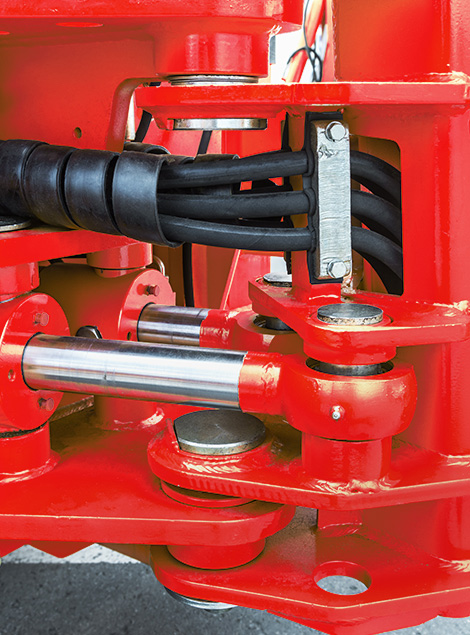How To Measure Hydraulic Cylinder
One question that AiSoar's team is always answering is: What information do I need to replace my hydraulic cylinder? This article is here to address that exact concern, walk you through measuring the size of your hydraulic cylinder, and provide the information needed to replace your cylinder.
The hydraulic cylinder measurement should include the measurement of the main components. Tools for measuring hydraulic cylinder components include tape measures and/or calipers. The three main types of hydraulic cylinders are as follows:
Piston rod cylinder - contains a piston and can be single or double acting
Plunger cylinder - a single acting cylinder (for example, a snow plow cylinder).
Telescopic cylinder - has multiple stages and can operate in single or double action.
The following are the primary characteristics of hydraulic cylinders:
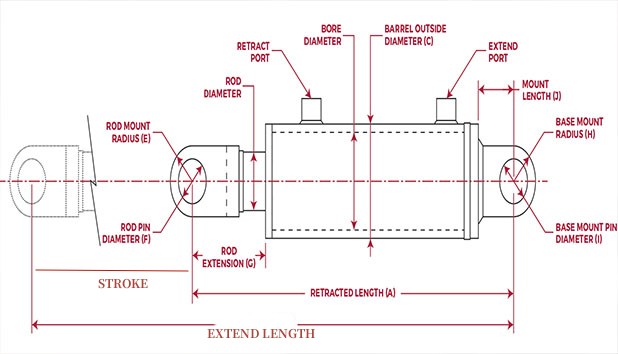
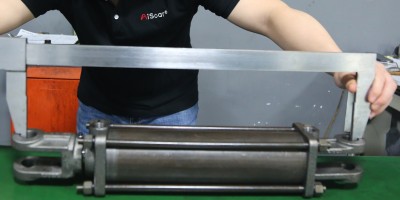
Retraction length of hydraulic cylinder
When the cylinder is fully retracted, the measured value is from the center of the pin to the center of the pin.When the cylinder is fully retracted, the measured value is from the center of the pin to the center of the pin. Retracted length can be measured with any standard tape measure. Without this measurement, the cylinder will not be installed and operated properly on machinery.
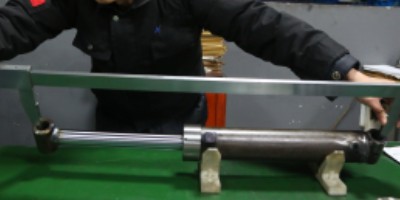 Lengthening of hydraulic cylinder
Lengthening of hydraulic cylinder
The measurement is that the center of the needle is fully extended to the center of the needle. Hydraulic cylinder has to be fully extended (open) when measured. Just like with retracted length, use tape measure.
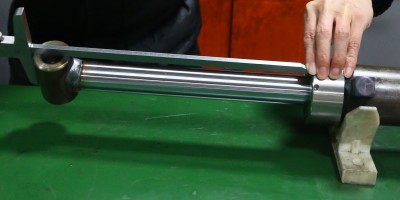
Stroke
The measured value is the extension length of the hydraulic cylinder minus the retracted length .Stroke = Extended Length – Retracted Length.
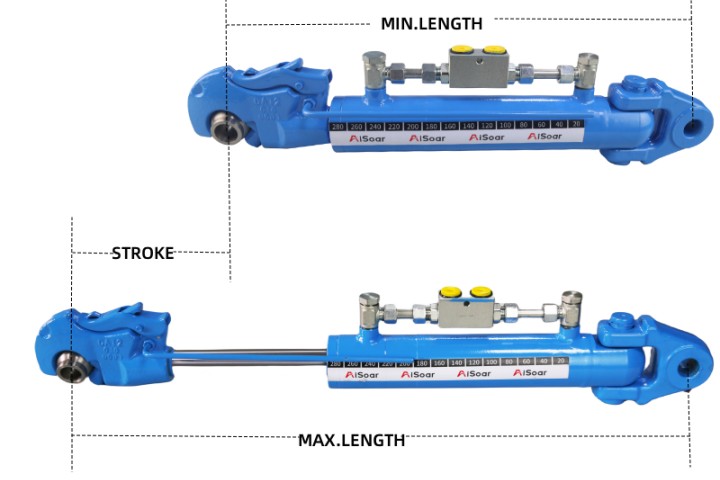
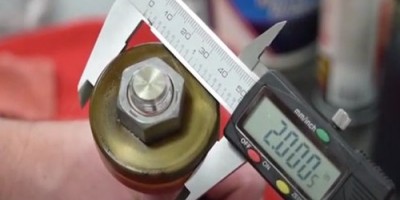 Bore Diameter
Bore Diameter
Piston diameter or inside barrel diameter is the main dimension of the hydraulic cylinder and known in the hydraulic industry as “BORE”. Therefore it has to be measured first. If your cylinder is taken apart, simply measure either inside diameter of the barrel (cylinder tubing) or measure actual piston diameter across.Measure the outer diameter of the cylinder and subtract the wall thickness of the tubing.Standard apertures range from 1.5" to 6" apertures.
Sometimes the bore diameter can not be measured directly with tools. We can calculate it with the following methods
Step 1:
Measure the cylinder outside diameter,then subtract the cylinder wall thickness.
For example:Cylinder outside diameter is 90mm,generally the wall thickness is 5mm and above,We can calculate that the cylinder bore diameter is equal to
90-5*2,the bore diameter is 80mm and below
Step 2:
Gerernally the bore diameter is twice the rod diameter,we can caculate the bore diameter according the rod diameter.If the rod diameter is 45mm through measurement,then the bore diameter is 45mm*2,about 90mm.
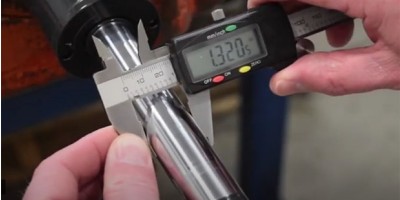 Rod diameter
Rod diameter
The hydraulic cylinder rod is a spherical chrome-plated steel bar that moves in a reciprocating motion. It's a bright portion that comes out of the cylinder, as our customers frequently describe it. Caliper can easily handle rod measuring. Simply use a caliper to measure the diameter (thickness) of the rod. The rod is one of the most important pieces of the hydraulic cylinder since it bears the majority of the force during operation. A thorough examination of rod size and specs can help to avoid a bent rod problem.
Mounting pin size of the base.
After we've recorded all of the cylinder's primary dimensions, we may go on to the secondary ones. There are thousands of different ways to attach a hydraulic cylinder on machines. Every original equipment manufacturer designs their own product. The most common style of mounting, however, is one with pivot pins. These pins link either end of a hydraulic cylinder to an equipment frame. As a result, pivot pin diameter must be checked using a caliper to ensure that hydraulic cylinder replacement may be put on your apparatus.Standard cylinders are clevis and cross tube mounting. Clevis Mounting looks the letter U and is often referred to as bunny ears.
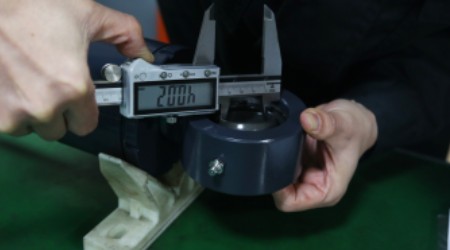
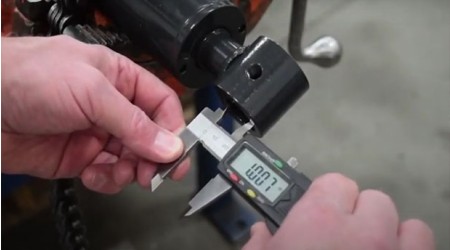
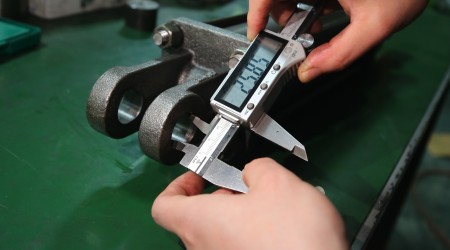
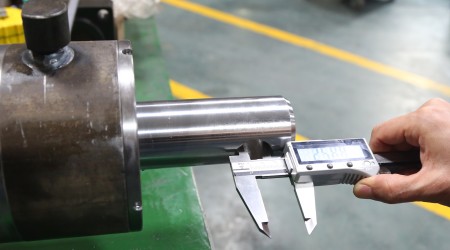
The last but not least step is to arbitrate the working pressure of the hydraulic system. Despite enormous selection of hydraulic cylinders out there, most of the hydraulic applications work at 2500 – 300 PSI pressure. This pressure rating is sufficient to perform most of the hydraulic applications.
The final step in the process is to compare your measurements to a manufacturer’s drawing before you order. Cylinders drawings can be configured using our manufacturer’s configuration tools. A two-dimension or three-dimension drawing can be provided in most cases. Aisoar requires a signature verifying the dimensions of a cylinder on all orders. It ensures that we get it right the first time and provides a good record for future orders.Any more question for the hydraulic cylinder,please contact follow information.
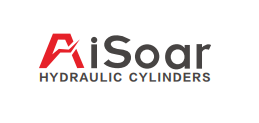
Hangzhou Aisoar hydraulic technology Co.,Ltd
Tel: 86-571-87920309
Fax: 86-571-87926329
Mob&Wechat&Whatsapp: +86 13588456446
Email:Jack@ai-soar.com


 ES
ES RU
RU